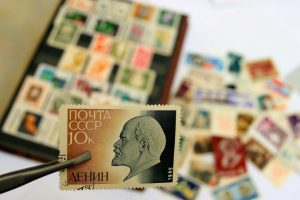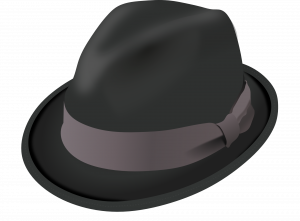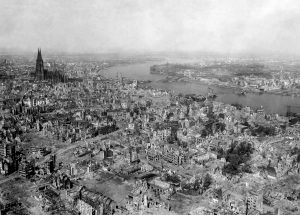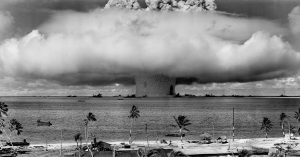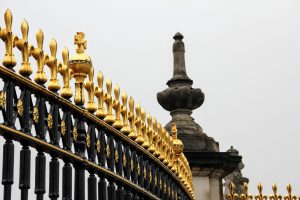We have an image of spies and spy craft as being somehow glamorous and chivalrous -- a legacy of the Cold War, which inspired huge quantities of spy fiction from James Bond to John le Carré.
In fact, being a spy is dirty, dangerous, somewhat sleazy, and often involves a good deal of paper work. Rather than dashing playboys with briefcases full of cash and Walther PPKs, many spies are rather banal people who go to extreme lengths in the service of their trade -- whether for personal gain, ideology, or merely for a touch of excitement.
So let's take a look at the 40 greatest and most important spies from history, although it's worth remembering that the best spies of all won't make this list because we will never know their names.
40. The Illegals
On the surface: Ordinary Russians living in America
In reality: A network of sleeper agents
This is the real life story of The Americans, only this group of sleeper agents were apprehended in 2010, long after the end of the Cold War.
Ten individuals of Russian extraction or association (four couples and two single people) who were working or going to school in the U.S., were arrested and revealed as deep cover Russian agents on June 27, 2010. They were quietly collecting information and infiltrating groups, but also starting families and building the trappings of normal American lives.
The whole incident is a great intro to this piece in itself: spies have always been with us throughout history, and they certainly didn't disappear at the end of the Cold War.
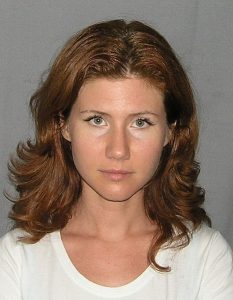 Wikimedia Anna Chapman, the most famous of the Illegals.
Wikimedia Anna Chapman, the most famous of the Illegals.
39. Nancy Wake
On the surface: Wife of a French industrialist in WWII France
In reality: Leader of the French Resistance
When the Germans invaded France in 1940, Nancy Wake became involved as a courier and leader of the French Resistance. She was so successful and cunning in her spy craft that she was forced to flee Nazi-occupied Europe in 1943 with a 5,000,000 Franc price on her head.
However, she returned in 1944 to lead the maquis guerilla groups in their fight against the Nazis. On one occasion, she and her 7,000 resistance fighters defeated a force of 22,000 Germans who had been sent to destroy them, killing more than 1,400 enemy soldiers and suffering only 100 casualties in return.
Nancy Wake was one of the most decorated women of the war. She died in 2011 at the age of 98.
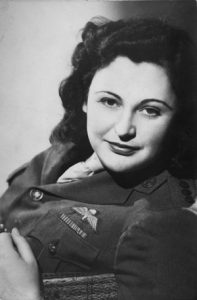 Wikimedia. Nancy Wake, 1945.
Wikimedia. Nancy Wake, 1945.
38. James Wilkinson
On the surface: American Revolutionary, senior officer of the U.S. Army, first governor of Louisiana
In reality: Spy for the Spanish Empire
James Wilkinson is one of the most infamous figures in American history. He served in the Revolutionary War, twice served as the highest officer in the U.S. Army, and was the first governor of the Louisiana territory. But after his death, a historian discovered that he had also been a spy for the Spanish Empire. To them, he was known as 'Agent 13', and he sold them every secret he could get his hands on.
Theodore Roosevelt called him the most despicable character in American history; one historian tarred him as "a general who never won a battle or lost a court-martial."
 Wikimedia James Wilkinson.
Wikimedia James Wilkinson.
37. Markus Wolf
On the surface: The number two man in the East German secret police
In reality: Same
Wolf wasn't a spy, but a spy master. He was the second in command of the dreaded East German secret police (Stasi) for 34 years, and controlled all foreign intelligence operations carried out by that agency. He was reportedly so elusive and mysterious that Western intelligence didn't even know what he looked like until 1978. This won him the moniker "the man without a face."
He faced legal troubles in the new Germany after the end of the Cold War, but managed to avoid any real punishment. He died in 2006.
 Bundesarchiv, Bild 183-1989-1208-420 / Schöps, Elke / CC-BY-SA 3.0 Markus Wolf; note, he does in fact have a face.
Bundesarchiv, Bild 183-1989-1208-420 / Schöps, Elke / CC-BY-SA 3.0 Markus Wolf; note, he does in fact have a face.
36. Konon Molody
On the surface: Finnish-Canadian businessman living in the UK
In reality: Soviet spymaster
Konon Molody was so good at being a spy that even after he was captured it took authorities years to learn who he really was.
Molody ran the infamous Portland spy ring in the UK. He managed a network of spies in the British military establishment, collecting their intelligence and passing it on to Moscow.
His spy ring was uncovered by British police in 1961, and he was arrested under the fake name 'Gordon Lonsdale'. He staunchly refused to give the British his real name or any information about his true identity and background.
Lonsdale was only revealed to be Konon Molody when he was shipped back to the USSR in 1964 as part of a prisoner transfer. He died in 1970, maybe of natural causes, maybe not.
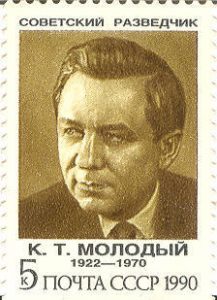 Wikimedia Konon Molody on a Soviet stamp.
Wikimedia Konon Molody on a Soviet stamp.
35. Jerzy Pawłowski
On the surface: Major in the Polish Army and Olympic gold medalist
In reality: Double agent working for the CIA
Jerzy Pawłowski is a character straight out of a Bond movie. He was a Major in the Polish army who won a gold medal in fencing at the 1968 Olympics. But in 1975 it was revealed that he had been a double agent for the CIA since 1964. (He had also been a spy for the Polish government, including against his own Olympic teammates.)
His fame likely saved him from a bullet to the back of the head; instead, he was sentenced to 25 years in prison. He died in 2005.
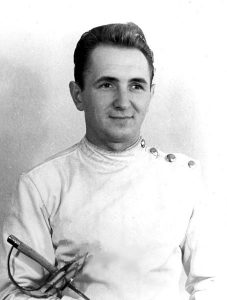 Wikimedia Jerzy Pawłowski.
Wikimedia Jerzy Pawłowski.
34. Giacomo Casanova
On the surface: Playboy, conman, adventurer, and author
In reality: Sometime French spy
Yes, Casanova was briefly employed as a spy by a French count. Most men were dazzled by Casanova's tall tales (around this time, he was claiming to be a 300-year-old alchemist), but one fellow in particular recognized what Casanova really was: a brilliant liar. He offered Casanova a job in espionage, selling state bonds here, there, and everywhere. Like most of Casanova's gigs, it ended in failure, with him blowing all his money.
Maybe this is where James Bond derives his inspiration for womanizing his way through intelligence work and blowing huge sums of money?
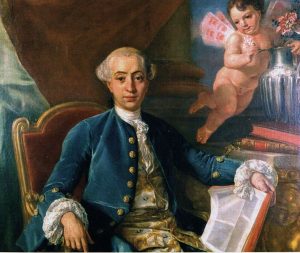 Wikimedia Casanova was gifted with the ladies, less so with espionage.
Wikimedia Casanova was gifted with the ladies, less so with espionage.
33. Igor Gouzenko
On the surface: Soviet embassy clerk in Ottawa, Canada
In reality: Defector who arguably started the Cold War
Igor Gouzenko is often (if exaggeratedly) credited with starting the Cold War.
He served as a cipher clerk at the Soviet embassy in Ottawa during WWII. In September of 1945, he was scheduled to return to the USSR, but decided he didn't want to go back to such a repressive country. Instead, he defected, bringing with him a briefcase full of evidence outlining the extent of Soviet spying in the West.
This Gouzenko Affair, as it was known, was one of the trigger incidents of the Cold War.
 Image by Ottawa. Gouzenko took great pains to avoid showing his face -- for obvious reasons.
Image by Ottawa. Gouzenko took great pains to avoid showing his face -- for obvious reasons.
32. Ryszard Kukliński
On the surface: Polish Army colonel during the Cold War
In reality: NATO spy
Kukliński decided to spy for NATO because he was disgusted by the cruelty of the communist system. Between 1972 and 1981, he passed 35,000 secret Soviet documents to NATO; perhaps the most valuable detail he shared was the methods the Soviet armed forced used to avoid detection by American spy satellites.
Compromised, Kukliński and his family escaped from Poland in 1981 with help from the CIA. Both his sons later died in suspicious circumstances, however, possible retribution.
He died in Tampa in 2004.
 Polish Senate/Wikimedia Ryszard Kukliński.
Polish Senate/Wikimedia Ryszard Kukliński.
31. Jack Barsky
On the surface: Computer programmer working for an insurance company in New York
In reality: Soviet sleeper agent
Jack Barsky was a Cold War sleeper agent. It's a very different kind of spying. Rather than pretending to be diplomats, these spies attempt to blend in to the fabric of the society they're penetrating, assuming ordinary, even boring identities.
Jack Barsky (real name Albrecht Dittrich) is among the most famous. Born in East Germany, he was recruited by the Soviets, trained in American English, and sent to live in New York under an assumed identity. He was meant to infiltrate political circles, but found this was impossible. Instead he studied computer programming and fed technological secrets to his masters back in Moscow.
Barsky lived two separate but parallel lives, with wives and families both in America and in East Germany.
After the Cold War, Barksy's identity was given up by a defector and he was eventually apprehended by the FBI. He confessed, co-operated, and so was never charged.
He still lives in the U.S. and appears on CNN occasionally to discuss espionage and Russo-American relations.
30. George Blake
On the surface: An MI6 agent
In reality: A double-agent working for the Soviet KGB
George Blake was a British MI6 operative who became a communist double agent after being captured during the Korean War. Blake was posted to Berlin, from whence he provided much sensitive information to his handlers. Most famously, he compromised Operation Gold, a secret surveillance tunnel that the Western powers dug under the Soviet embassy.
Blake also gave up the names of spies within the Soviet Union, costing them their lives.
He was interrogated and confessed to being a spy in 1961, but managed to escape from prison, across the English Channel, and into the Communist Bloc with help from friends.
He is now 96 and still lives in Moscow.
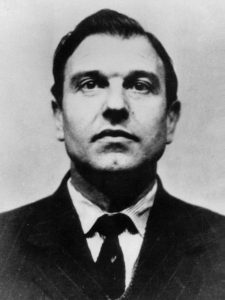 Wikimedia George Blake.
Wikimedia George Blake.
29. Beata Sparre
On the surface: Lady-in-waiting to the Queen of Sweden (1680-1715)
In reality: Spy and influencer for hire
Beata Sparre is a great example of how noblewomen in the old world could wield considerable power behind the scenes -- and make a handsome living for themselves while doing it.
Serving as lady-in-waiting at the Swedish court, Sparre cultivated a huge network of contacts that allowed her to influence government policy far more than you would expect for a woman whose official tasks were domestic in nature. She was perhaps the most powerful person at court, and she sold that power to all comers -- especially the King of France.
When the Swedish royal family bored of her antics, she simply took the money she had earned and retired.
 Wikimedia Queen Hedwig, whom Beata served.
Wikimedia Queen Hedwig, whom Beata served.
28. Fedora
On the surface: KGB agent offering to sell information to the FBI
In reality: Unclear
The Soviet intelligence agent codenamed 'Fedora' was really named Aleksey Isidorovich Kulak, but we opted for his pseudonym since so much about him remains mysterious.
In 1962, Kulak marched into the FBI's New York office and offered to sell them information. He informed them that there was a major KGB mole in the FBI, which sparked years of intensive counterintelligence investigation.
However, no such mole was ever found, and many have speculated that Fedora was actually supplying misinformation to intentionally foment chaos inside the FBI. To this day, no one is really sure who Fedora worked for.
He died in the USSR in 1983.
27. Charlotte de Sauve and the Flying Squadron
On the surface: 16th century French noblewomen at court
In reality: Spies for the Queen Mother
Catherine de' Medici was Queen Mother of France, but she had no intention of letting her children do whatever they pleased. She wanted to wield the real power. To that end, she assembled a small group of attractive young noblewomen called the Flying Squadron, whom she used to seduce the men at court and extract information from them.
The most accomplished of the Flying Squadron was Charlotte de Sauve, who seduced Catherine's son-in-law and some other relations. The information she gleaned from them, and the jealousy she provoked amongst them, allowed Catherine de' Medici to carry far more weight than a Queen Mother should.
 Wikimedia Charlotte de Sauve.
Wikimedia Charlotte de Sauve.
26. Richard Sorge
On the surface: German journalist in WWII Japan
In reality: Soviet spy
Sorge was a committed communist and long-time Soviet agent who was living undercover as a Nazi German journalist in Japan during WWII. Through his contacts in the German embassy in Tokyo, he provided vital information about Hitler's plans to invade the Soviet Union, and other critical information about Japanese activities throughout the war.
Although he managed to befriend an SS agent who was sent to investigate him, Sorge was ultimately discovered and hanged by the Japanese authorities. Many who knew him considered him to have been one of the greatest spies of all time.
 Bundesarchiv, Bild 183-1985-1003-020 / CC-BY-SA 3.0 Richard Sorge.
Bundesarchiv, Bild 183-1985-1003-020 / CC-BY-SA 3.0 Richard Sorge.
25. Sterling Hayden
On the surface: Budding Hollywood star
In reality: WWII secret agent
Sterling Hayden had already been in a couple of movies when WWII broke out, and he would go on to appear in many more, most notably Dr. Strangelove and The Godfather.
But in the mean time he decided to serve his country, in which capacity he found himself working for the OSS, the forerunner of the CIA. He parachuted into occupied Croatia, brought supplies to Yugoslav partisans, and ran air rescue operations in Occupied Europe.
Oh, to live the life of a movie star and a spy both! It's almost unfair.
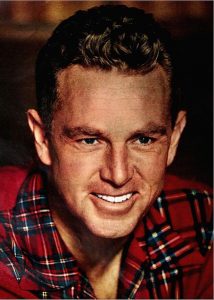 Wikimedia Sterling Hayden.
Wikimedia Sterling Hayden.
24. Harriet Tubman
On the surface: Illiterate former slave woman
In reality: Manager of the Underground Railroad
Harriet Tubman managed to escape slavery, but that wasn't enough for her. Risking her hard-won freedom, she made at least 13 trips back to the slave states to save family, friends, and strangers. To manage this, she needed all the subterfuge she could muster: a network of sympathizers, an ability to move unseen, and quick thinking to avoid detection.
She remains, not only one of America's great moral heroes, but one of America's greatest spies if you ask us.
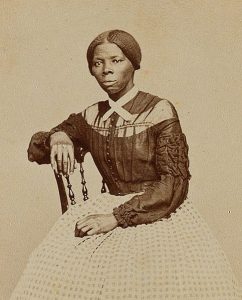 Wikimedia A young Harriet Tubman.
Wikimedia A young Harriet Tubman.
23. Thomas Knowlton
On the surface: A soldier in the American Revolution
In reality: America's first professional spy
Thomas Knowlton came from a family of soldiers. But in 1776, George Washington gave him a new task: he would be the commander of America's first professional company of spies, subsequently known as 'Knowlton's Rangers'. They coordinated reconnaissance as well as more traditional espionage operations against the Brits, harrying and undermining their position.
Knowlton was killed at the Battle of Harlem Heights, but the American intelligence apparatus is his legacy.
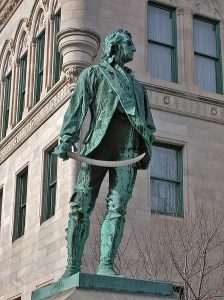 Msact/Wikimedia Statue of Thomas Knowlton.
Msact/Wikimedia Statue of Thomas Knowlton.
22. Harold Cole
On the surface: A British officer helping the French Resistance in WWII
In reality: A career criminal and German spy
Harold Cole began life as a petty criminal in the UK; he lied about his profession to sign up for WWII and was promptly shipped to France. Left behind when the country fell, he made contact with the French Resistance, pretending to be a British officer who was sent to help them.
Instead, he embezzled a bunch of money and lived the high life in occupied France. Eventually he was caught out and imprisoned by the Resistance, but he escaped and turned himself in to Nazi authorities, offering to become a spy. From then on he worked for the SS, infiltrating Resistance groups and giving up names.
After the war he tried to blend in but was himself given up and shot by French police while trying to escape.
21. Oleg Gordievsky
On the surface: KGB spy in London
In reality: British spy in the Soviet embassy
Oleg Gordievsky was a foreign agent of the Soviet KGB who was originally posted to Denmark. While there, he became disenchanted with the USSR's strong-arm tactics and Danish and British intelligence were able win him over to their side.
That proved serendipitous when Gordievsky was later reassigned to the Soviet embassy in London in 1982. Gordievsky gave the British MI6 much information about the internal workings of the CIA and on one occasion helped to avoid a potential nuclear confrontation.
MI6 passed his intelligence on to CIA without revealing his identity, which annoyed the Americans. In response, they conducted an investigation and managed to figure out who he was. Unfortunately, Gordievsky's identity was compromised by a Soviet spy in the CIA named Aldrich Ames (more on him later).
Gordievsky was recalled to Moscow, interrogated, and placed under surveillance. Lucky for him, he was able to escape to the UK, and is still alive today.
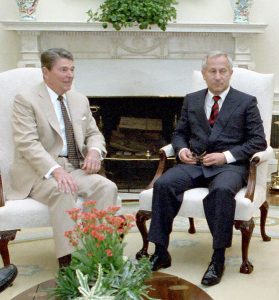 Wikimedia Gordievsky meets Reagan.
Wikimedia Gordievsky meets Reagan.
20. Sir Francis Walsingham
On the surface: Queen Elizabeth I's spymaster
In reality: What you see is what you get
Sir Francis Walsingham was Queen Elizabeth I's J. Edgar Hoover. His extensive network of foreign spies helped prepare England to defeat the Spanish Armada in 1588, saving the country. His spies also uncovered numerous plots to kill or overthrow Elizabeth. Walsingham had a cruel streak as well, flushing out, torturing, and condemning any and all enemies of his queen to execution. For him it was clearly a passion project, since he invested much of his own fortune in his work.
Walsingham was immortalized in the Cate Blanchett film Elizabeth, in which he was played by Geoffrey Rush.
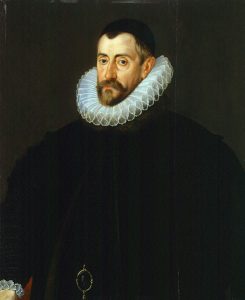 Wikimedia Sir Francis Walsingham.
Wikimedia Sir Francis Walsingham.
19. Belle Boyd
On the surface: The charming daughter of a Virginia hotelier
In reality: A Confederate spy in the Civil War
It's hard to separate fact from fiction in the case of Belle Boyd, since she wrote an extremely flamboyant account of her own actions. But she seems to have begun her career as a spy by shooting a Union soldier who was harassing her near her home in Virginia.
After that incident she was kept under surveillance, but used her charm to wheedle information out of the Union troops who were sent to guard her. She passed this information along and greatly aided Confederate figures such as Stonewall Jackson with her intelligence.
After the war she moved to England, married a former Union officer, and became an actress.
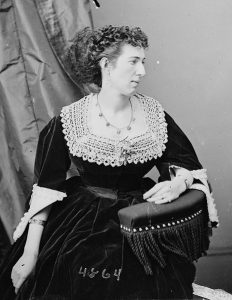 Wikimedia Belle Boyd.
Wikimedia Belle Boyd.
18. Melita Norwood
On the surface: Personal Assistant at British Non-Ferrous Metals Research Association
In reality: Soviet nuclear spy
Melita Norwood is a great reminder that the best spies are often seemingly boring people. Who could be more boring than a junior employee at an organization with the sleep-inducing name "British Non-Ferrous Metals Research Association"?
And yet for 37 years, Melita Norwood used her position to pass atomic secrets her boss possessed to the USSR. Recently released archival documents suggest that this rather unassuming woman was actually more valuable to the Soviets than the much more famous Cambridge Five spy ring.
Norwood was only outed when a Russian defector mentioned her spying in a book in 1999. She wasn't tried since she was 87 years old at the time. According to her own account, she spied because she was a committed communist, not for any financial or personal gain.
17. John Walker
On the surface: U.S. Navy Chief Warrant Officer and communications specialist
In reality: Soviet spy
John Walker is one of the most infamous spies in American history. From his perch as a naval communications expert, he helped the Soviets decipher over a million secret communications between 1968 and 1985. The information Walker provided was so extensive that the Soviets likely knew the locations of all American submarines at any given time.
What is perhaps worst about Walker's treachery is that he involved his family, and he did it all for a profit.
Just goes to show you: there's nothing glamorous about most real life spies.
16. Ana Montes
On the surface: Defence Intelligence Agency (DIA) expert on Cuba
In reality: Cuban spy
Ana Montes was a gifted intelligence analyst who rose to become one of the United States government's foremost experts on Cuban affairs. Unbeknownst to that government, she was passing information to Cuba the whole time, including the identities of American spies in Cuba and military information.
Montes was arrested by the FBI in 2001, pled guilty to espionage, and was sentenced to 25 years.
Her lawyer claims she did what she did because she felt the United States' policy toward Cuba was unfair.
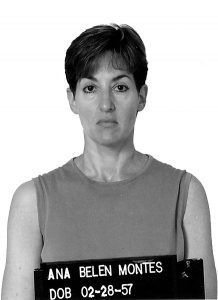 Wikimedia Ana Montes.
Wikimedia Ana Montes.
15. Kim Philby
On the surface: High-ranking British MI6 agent
In reality: Soviet spy
Kim Philby was one of the most infamous members of the Cambridge Five spy ring, a group of Brits who slipped information to the Soviets during WWII and the early Cold War period.
Philby fed large amounts of information to the Soviets, along with his accomplices. He was the chief liaison between British and American intelligence for a time, granting him access to highly sensitive material.
Philby also helped two fellow spies -- Guy Burgess and Donald Maclean -- to escape to the USSR once they had been outed. He himself was cleared of wrongdoing for a time, but was later outed as a spy and fled to Moscow. He died there in 1988, a national hero of the Soviet Union.
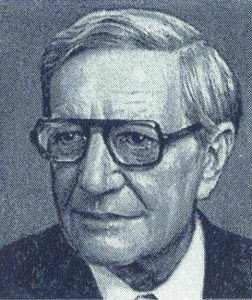 Wikimedia. Kim Philby on a Soviet stamp.
Wikimedia. Kim Philby on a Soviet stamp.
14. Juan Pujol García
On the surface: Spanish fascist running a German spy ring
In reality: Random Spanish dude trolling the Germans hard
When WWII broke out, Juan Pujol García wanted to become a spy. He applied to both the U.S. and UK, but neither country took him seriously. So Pujol decided to go solo.
He pretended to be a fascist official of the Spanish government who wanted to spy for Germany. Delightedly (and stupidly), the Germans sent him to Britain. Instead, Pujol went to Lisbon and started sending them fake reports, inventing imaginary subordinates who were feeding him intelligence.
Eventually, after Pujol hilariously had the Germans assigning whole units to go on wild goose chases, the British realized he was for real and hired him. Pujol's campaign of misinformation was vital to the success of D-Day, among other operations.
After the war, Pujol faked his death and moved to Venezuela where he ran a gift shop. He died in 1988.
 Wikimedia Juan Pujol García.
Wikimedia Juan Pujol García.
13. James Armistead Lafayette
On the surface: Runaway slave spying for the British in the Revolutionary War
In reality: Spy for the United States
When the Revolutionary War broke out, James Armistead Lafayette wanted to do his part. Being a slave, he first had to secure the permission of his master, which he eventually obtained.
Although he would not be invited to fight, the Marquis de Lafayette sent him to pose as a runaway slave loyal to the British. In this capacity, he provided the nascent United States with valuable information from behind enemy lines, helping to secure independence once and for all.
After the war, he was eventually freed and took the name Lafayette to honor the French nobleman and revolutionary fighter who had made him a spy and petitioned for his freedom.
 Wikimedia James Armistead Lafayette.
Wikimedia James Armistead Lafayette.
12. (Sir) Anthony Blunt
On the surface: A Cambridge University art historian, knight, and former British military intelligence officer
In reality: Potential leader of a Soviet spy ring
Anthony Blunt was a widely respected art historian and intellectual. But during his time at Cambridge, he may have been responsible for recruiting members of the Cambridge Five spy ring that fed secrets to the Soviet Union. (He insisted that he himself was recruited.)
Throughout and after WWII, as members of Britain's MI5, Blunt and his colleagues passed a great deal of confidential information to the Soviets. He was later found out and secretly confessed to being a spy in exchange for immunity. When the information became public in 1979, he was stripped of his knighthood and died four years later in ignominy.
11. Allan Pinkerton
On the surface: A private detective turned Civil War spymaster
In reality: Same
Before the Civil War, Allan Pinkerton was the first detective in Chicago, and the founder of the first private detective agency in America. He fought against counterfeiters, highwaymen, and train robbers.
He was also a staunch abolitionist. When the Civil War broke out, Pinkerton became the head of Union intelligence, gathering vital information from agents who went undercover as Confederate soldiers. Pinkerton himself went undercover on several occasions, nearly getting himself killed. He also scotched an assassination attempt on Lincoln during the war.
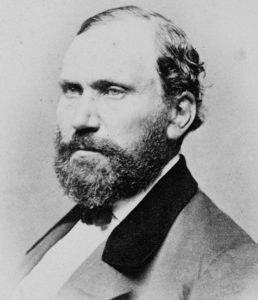 Wikimedia Allan Pinkerton.
Wikimedia Allan Pinkerton.
10. Mata Hari
On the surface: An exotic dancer and courtesan
In reality: Spy for France and potentially Germany
In espionage, nothing is as it seems -- that's the whole point! One of the most infamous figures of intrigue is Mata Hari (born Margarethe Zelle), a Dutch émigré who became an infamous exotic dancer in Paris in the early 1900s, and later a spy.
Zelle spent time in the far east, and when she returned to Europe she used her experience with Balinese dance to craft a mysterious image of herself as an exotic foreign beauty. She quickly became the most famous dancer and courtesan in Paris.
During WWI, the French government forced her to become a spy and sent her to attempt to seduce the Crown Prince of Germany, for whom she had danced before. Instead, she offered to sell French secrets to the Germans -- though this may simply have been a ploy to gain their trust.
Ploy or no, she was accused of treachery by the French and executed by firing squad in 1917.
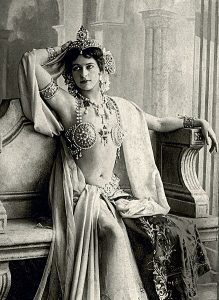 Wikimedia Mata Hari.
Wikimedia Mata Hari.
9. Julius and Ethel Rosenberg
On the surface: An Army electrical engineer and his wife
In reality: Spymasters selling technological secrets to the USSR
Julius Rosenberg was an engineer in the Army Signal Corps from 1940 to 1945, when he was dismissed for being a former Communist. Together with his wife, Ethel, he used his connections to create a spy ring to provide the Soviet Union with information on American technologies -- including sonar, jet propulsion, radar, and possibly nuclear weapons.
The Rosenbergs were arrested in 1950 after a relative testified against them. They were subsequently executed in the electric chair at Sing Sing Prison, the only spies to suffer the death penalty in America during the Cold War.
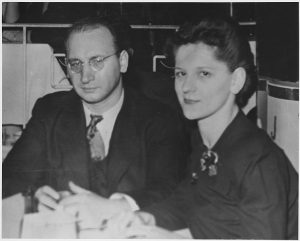 Wikimedia Julius and Ethel Rosenberg.
Wikimedia Julius and Ethel Rosenberg.
8. Oleg Penkovsky
On the surface: Soviet GRU (military intelligence) colonel
In reality: Spy for the UK, or potential triple agent
Perhaps the greatest testament to Penkovsky's brilliance as a spy is that there's still no consensus on whether or not he was a triple agent. That being said, most people believe he was a genuine ally of the West who was trying to avert nuclear catastrophe.
It was Penkovsky who supplied the UK and U.S. with detailed information about Soviet missile systems, allowing President Kennedy and his team to respond properly to the Cuban Missile Crisis. In fact, he may have helped prevent a thermonuclear war.
Despite this, Penkovsky had been betrayed and was arrested before the Cuban Missile Crisis reached its peak. He was executed, although few details about his final fate are known.
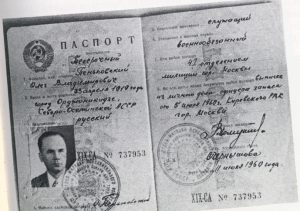 Wikimedia Penkovsky's passport.
Wikimedia Penkovsky's passport.
7. Virginia Hall
On the surface: A one-legged leader of French resistance during WWII
In reality: Same
Hall was born in Baltimore, but she spent much of her youth traveling Europe, studying languages, hoping to one day become a diplomat. Sadly, her career prospects were dashed when she lost a leg during a hunting accident in Turkey.
She was in France when the Nazis invaded in 1940 and was forced to flee to England. However, she voluntarily returned to the continent and co-ordinated resistance in the South of France. She arranged supply drops with the Allies, trained battalions of resistance fighters, and engaged in sabotage, earning herself the moniker "the Most Dangerous Woman in France."
After the war, she joined the newly-formed CIA and married a fellow agent. She died in 1982.
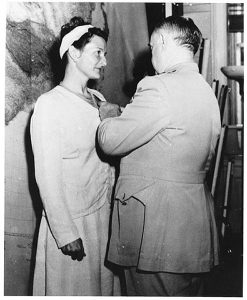 Wikimedia Virginia Hall.
Wikimedia Virginia Hall.
6. Shi Pei Pu
On the surface: An attractive female opera singer
In reality: A male spy for the Chinese government
The story of Shi Pei Pu is perhaps the strangest in the history of espionage.
Shi was teaching Mandarin lessons at the French embassy in Beijing in 1964 when he met the lonely young diplomat Bernard Bouriscot. Shi told Bouriscot that "she" was a woman and a struggling opera singer, trying to pass as a man because her father had wanted a son. The two soon embarked on an affair, Bouriscot somehow continuing to believe that his new lover was a woman. At one point, Shi even presented Bouriscot with a child, claiming it was their son.
All the while Shi was, of course, using Bouriscot to acquire information for the Chinese government.
In 1982, Bouriscot brought Shi and "their child" to France, where the two star-crossed lovers were promptly arrested for espionage and sentenced to 6 years. The pair were later pardoned by French President Francois Mitterand, who rightly dubbed the whole business "silly."
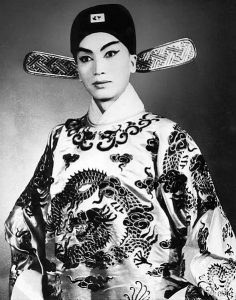 Wikimedia Shi Pei Pu.
Wikimedia Shi Pei Pu.
5. Rudolf Abel
On the surface: A photographer with a studio in New York City
In reality: A Soviet spymaster
Abel (real name William Fisher) was born to Russian parents in the UK, but he returned to his parents' homeland early in life and trained to become a spy.
Actually, he wasn't a spy; he was a spymaster. After WWII, he slipped into the United States and managed a ring of informants which included many of those who had stolen atomic secrets from the Manhattan Project for the Soviet Union. He later ran his operation out of a photography studio in New York City.
Abel was betrayed to American authorities by an inept subordinate who feared the wrath of Soviet authorities. It's unlikely Abel ever would have been apprehended otherwise.
He served 4 years of a 30 year sentence before being traded back to the Soviet Union for downed American pilot Francis Gary Powers, and reportedly spent the rest of his life lecturing in the Soviet spy academy.
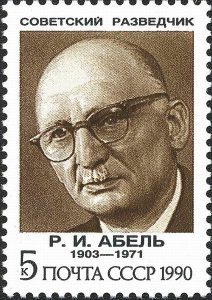 Wikimedia Rudolf Abel on a Soviet stamp.
Wikimedia Rudolf Abel on a Soviet stamp.
4. Dmitri Polyakov
On the surface: The head of GRU, Soviet military intelligence
In reality: A CIA spy
Major General Dmitri Polyakov was arguably the greatest spy in American history. Unlike most American assets in the USSR, Polyakov attained an extremely high rank -- head of military intelligence. This allowed the CIA to understand how the Soviet state worked from the top down, providing unique insights into decision-making. He served the United States from 1960 until his arrest in 1986.
As one CIA agent said of him: "He didn't do this for money. He insisted on staying in place to help us. His assistance was repaid with a bullet in the back of the head."
That bullet was supplied by the next spy on our list.
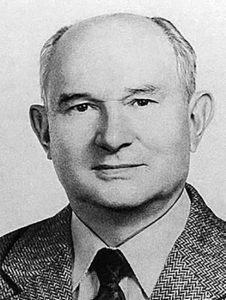 History.com Dmitri Polyakov.
History.com Dmitri Polyakov.
3. Aldrich Ames
On the surface: A mediocre CIA counterintelligence official
In reality: A KGB mole
Aldrich Ames was one of the deadliest KGB (Soviet intelligence) spies of the Cold War. As a counterintelligence officer in the CIA, he was perfectly placed to learn the true identities of American spies inside the USSR. He sold these names, and much else besides, to the Soviet government for a total of $2.7 million. He spent the money on a fancy house, a luxury car, expensive tailored suits, and his obstreperous wife.
Between 1985 and his arrest in 1994, Ames' betrayal cost at least 10 fellow agents their lives. He is still serving a life sentence without parole.
From his prison cell, he remained unrepentant. "Men like [those I betrayed] gave up names. They gave up secrets. I did the same thing for reasons that I considered sufficient to myself. I gave up the names of some of the same people who had earlier given up others. Its a nasty kinda circle."
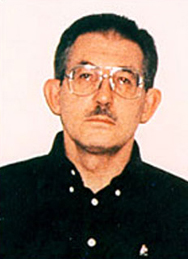 Wikimedia Aldrich Ames' mugshot.
Wikimedia Aldrich Ames' mugshot.
2. Robert Hanssen
On the surface: A devoutly Catholic FBI counterintelligence expert
In reality: A GRU spy
On the outside, Robert Hanssen was the last person you would suspect of being a Soviet agent. That's what made him so dangerous.
He sold information to the USSR and later the new Russian government from 1970 until 2001. He compromised U.S. military strategy, wiretapping operations, and the names of American sources, all while remaining anonymous to his Russian handlers so that he couldn't be betrayed in his turn. For these services, he was paid $1.4 million.
Hanssen was such an effective spy that he was at one point placed in charge of the operation to find the Soviet mole in the FBI -- he was assigned to catch himself.
The only reason he was identified is because the FBI paid a Russian source $7 million for a recording of the spy's voice. Hanssen is serving 15 consecutive live sentences without the possibility of parole.
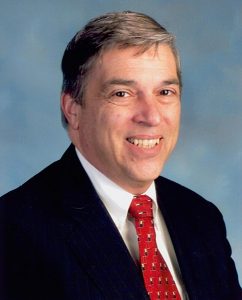 Wikimedia Robert Hanssen.
Wikimedia Robert Hanssen.
1. Fritz Duquesne
On the surface: Big game hunter, journalist, film publicist, adviser to Theodore Roosevelt, conman
In reality: German spy
He fought for the wrong side, but Fritz Duquesne embodied the life of scandal and adventure of the old-fashioned spy. His life is almost too bizarre to believe. He is, without question, the greatest spy who ever lived.
Duquesne was born in South Africa, where the Boer Wars imbued him with a deep hatred of the British that he would carry all his life. After fighting the empire in his native land, Duquesne escaped a British prison in Bermuda and obtained American citizenship. He worked as a journalist and even briefly became former President Theodore Roosevelt's shooting instructor.
He subsequently served as a spy for the Germans in both World Wars.
In WWI, Duquesne primarily worked to sabotage British shipping in South America. He often made a profit off this venture as well, insuring objects on ships which he himself then sank. He was arrested in New York in 1917, but faked partial paralysis and escaped prison yet again.
Duquesne fled to Mexico but returned to New York again under a fake name, where he worked for Joseph P. Kennedy among others, promoting silent movies. He was briefly identified and charged, but the his crimes against the British were past the statute of limitations and he was released.
When WWII broke out, Duquesne started his own German spy ring in New York, the largest ever uncovered and prosecuted in American history. He and 32 co-conspirators were arrested in 1941, and Duquesne was sentenced to 18 years.
He was later released due to ill health and died in 1956.
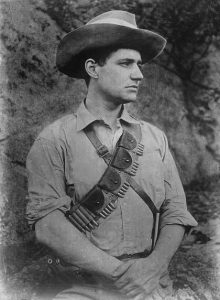 Wikimedia Fritz Duquesne.
Wikimedia Fritz Duquesne.



